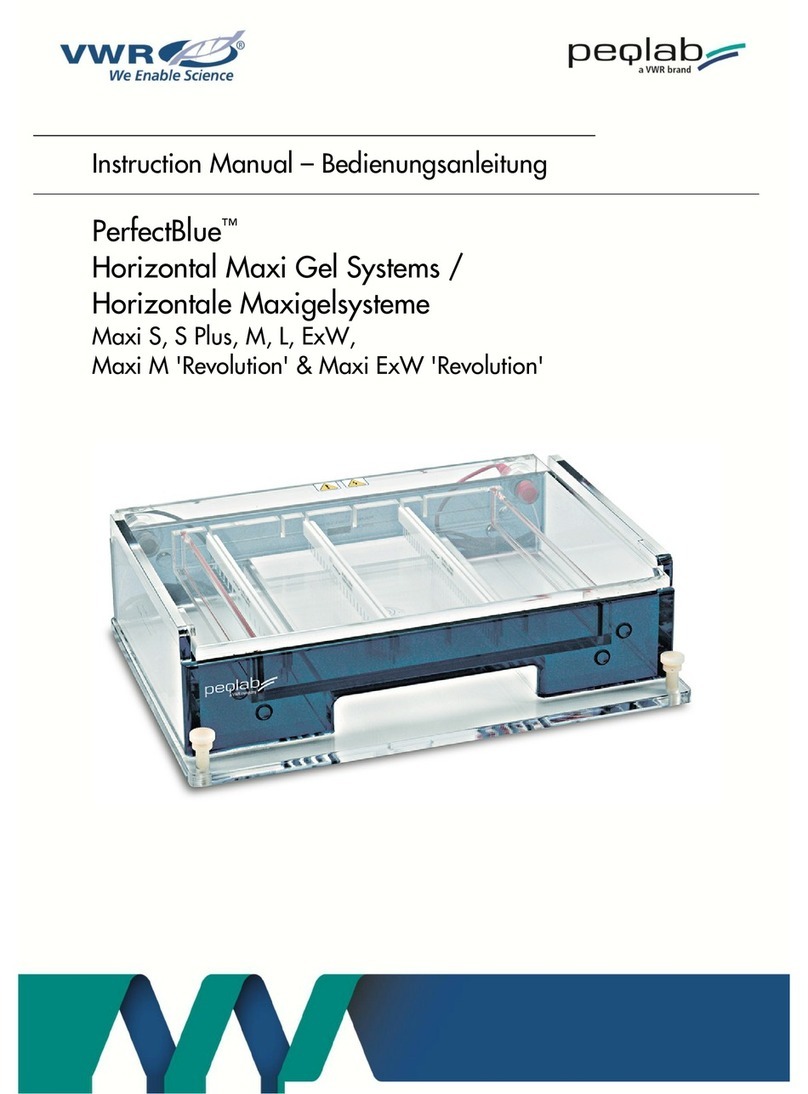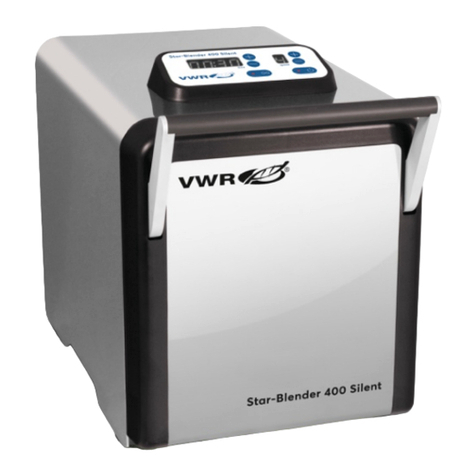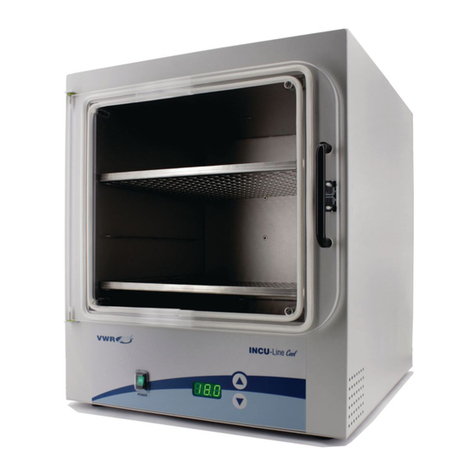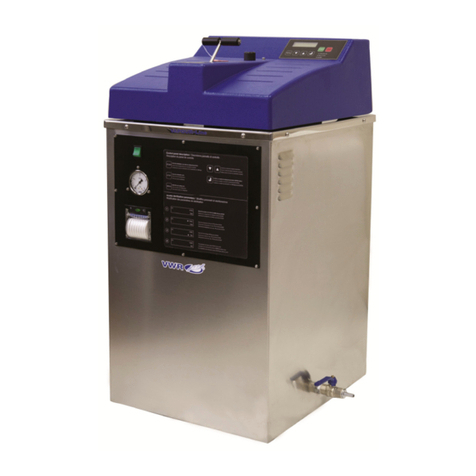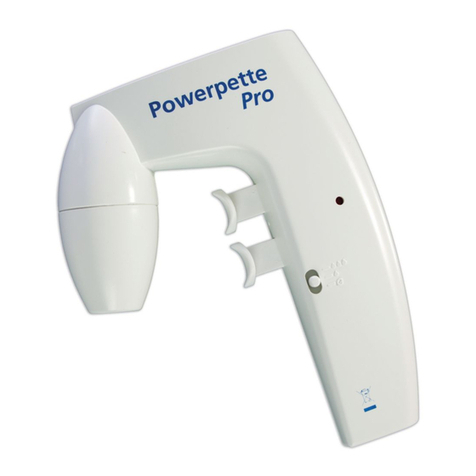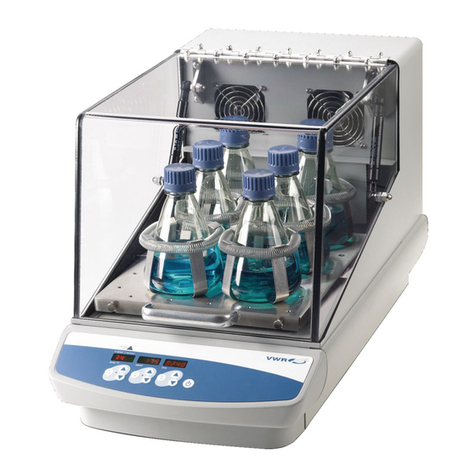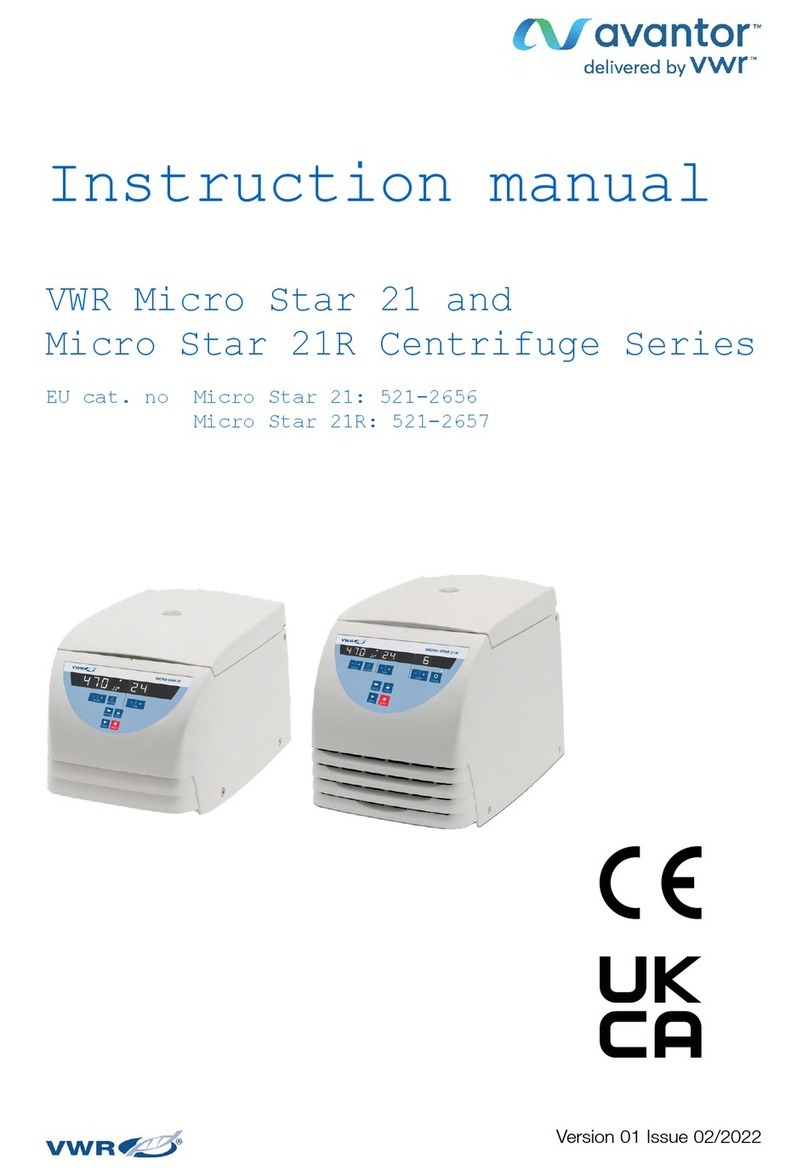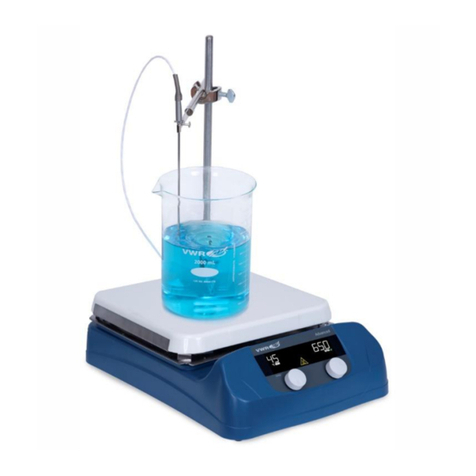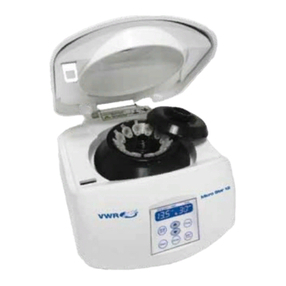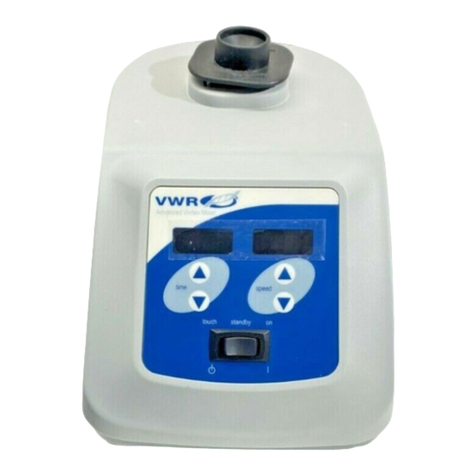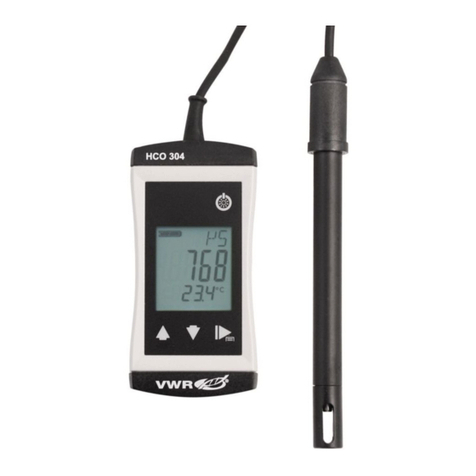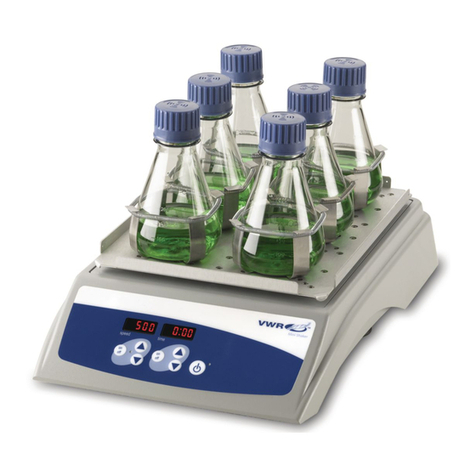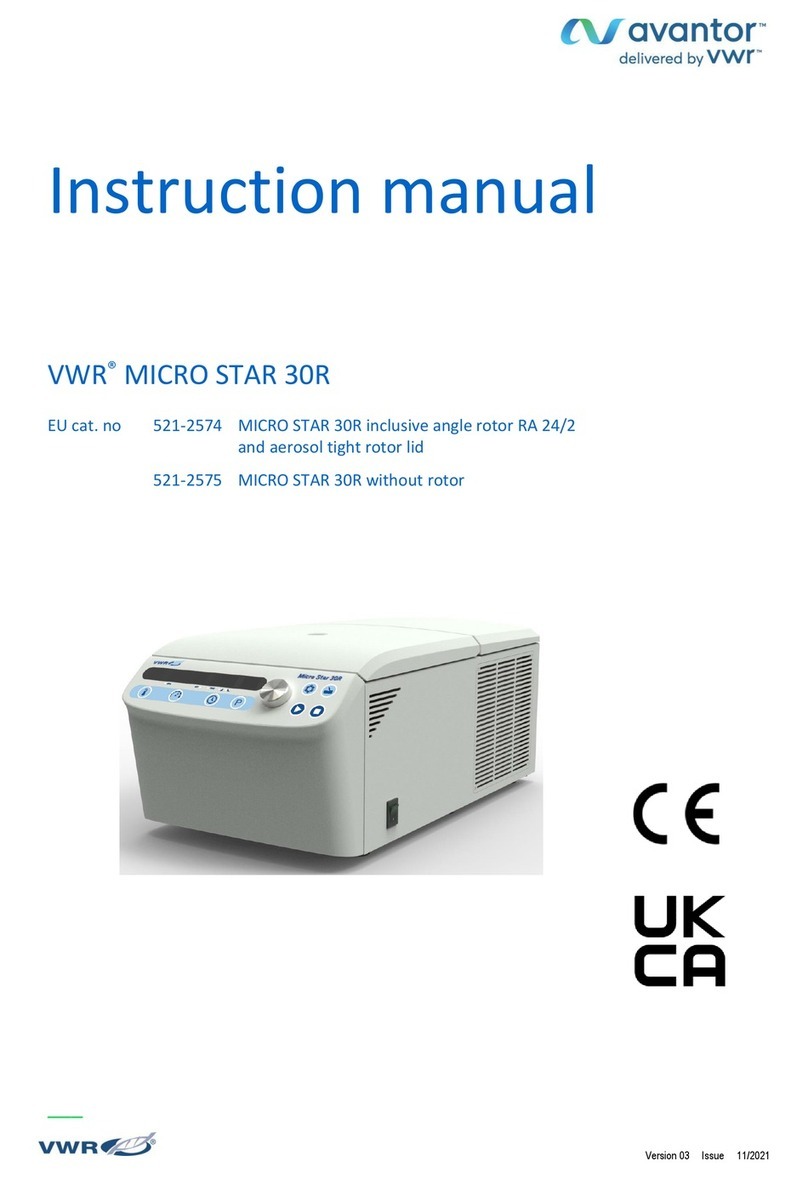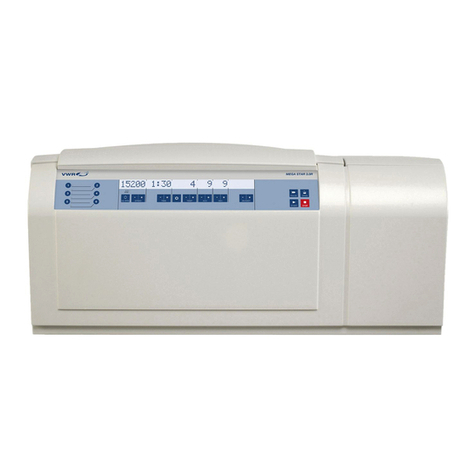
12 – VWR UHP PIPETTORS Instruction Manual – 13
8. Aspiration and Dispensing Instructions
Aspirating Liquid
1.
Press the pushbutton to the first positive stop.
Holdingthe pipettor vertically, immerse the pipet tip
into the sample liquid. The depth to which the pipet
tip is immersed in the sample liquid depends on
the model (for recommended values see Section 7).
Ifthepipet tip is not immersed to the recommended
depth or if the pipetting pushbutton is rapidly
released, air may enter the disposable pipet tip.
2. Release the pipetting pushbutton slowly and
smoothly to aspirate the sample. Wait one second
and then withdraw the pipet tip from the liquid.
CAUTION: Do not touch the used tip.
Dispensing Liquid
3. Place the end of the pipet tip against the inside wall
of the vessel at an angle of 10° to 40°. Then, press
the pushbutton smoothly to the first stop. Wait one
second.
4. Press the pushbutton to the second stop to expel any
remaining liquid. Keep the pushbutton depressed to
the very end, and remove the pipettor by drawing the
pipet tip against the inside surface of the receiving
vessel.
5. Release the pushbutton to its starting position.
6. Eject the pipet tip by pressing the tip ejector button.
Remember to change the pipet tip whenever
a different type of liquid is to be sampled.
Aspirating High-density Liquids
When pipetting liquids of higher viscosity or lower sur-
face tension than water (e.g., sera or organic solvents),
a film of liquid is formed on the inside wall of the pipet
tip. This film can create an error. As the film remains
relatively constant in successive pipetting operations
with the same tip, this error can be eliminated by form-
ing the film before transferring the first sample. This is
done by aspirating asample and dispensing it back into
the same vessel. Now,as the film is already formed, all
of the following samples will have better accuracy and
repeatability.
This pre-rinsing operation should be repeated when the
volume to be aspirated is changed or when a new pipet
tip is used.
NOTE: Normally the degree of error resulting from
heavy or viscous liquids is negligible if pipetting is done
slowly and carefully. It is most important to give the
liquids some time to react to the change of pressure by
holding thepipet tip in its position for at least 2 seconds
after the aspiration and the blow out stroke.
If in extreme cases, this method of operation does not
result in accurate values, recalibrate the pipettor out
inaccordance with Section 9.
After calibration, it is recommended to record the reca-
libration and the size of the correction introduced, to
facilitate reverse calibration to the standard liquid.
9. Checking Pipetting Accuracy Parameters
and Pipettor Recalibration
The pipettors are factory-calibrated using the gravimet-
ric method with manufacturer non-filtered pipet tips
and distilled water, in accordance with ISO 8655 guide-
lines for the maximum (nominal) liquid volume drawn
by the pipettor and for 10% of the maximum volume
according to the values given (Section 5).
The design of the pipettors enable their recalibration
and adaptation to other pipetting techniques or liquid
properties (i.e., temperature, density, and viscosity).
Use of filter tips may also require for the pipettor to be
recalibrated.
It is recommended to carry out periodic checks of
the operation of the pipettor at least once a year, the
period of operation of the pipettor with no checks
depends on the type of workload (liquids collected), and
other conditions (load intensity and sterilization in the
autoclave, replacement of components) in which the
pipettor is used.
If during pipettor operation you find that the accuracy
error (the difference between the real aspirated volume
and the preset volume) exceeds the permissible value
